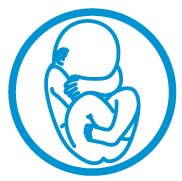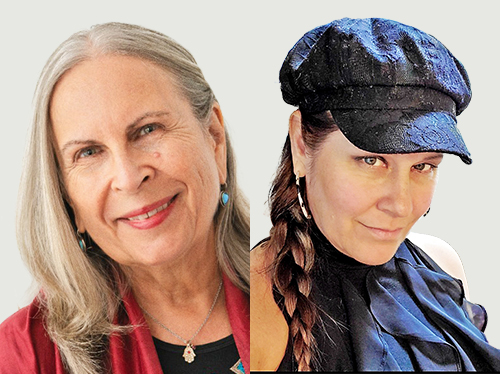 Breech Birth Online Course(s) & Continuing Education
Breech Birth Online Course(s) & Continuing Education
Access the latest clinical skills and research for Breech Birth for PREGNANCY, LABOUR & CHILDBIRTH professional training. These Breech Birth online courses provide practice-changing skills and valuable perspectives from leading global experts. This Breech Birth education has been accredited for a variety of CEUs / CERPs and can be accessed on-demand, at your own pace.
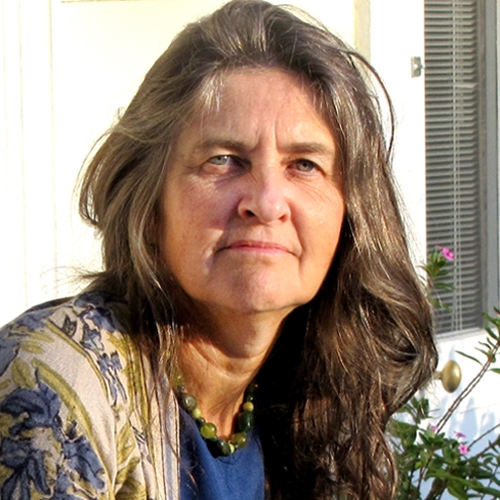
Avoiding Another Friedman Curve: Are We Ready to Relax Timing Limitations in Vaginal Breech?

Betty-Anne Daviss MA, RM has practised as a midwife for over 40 years on various continents, and as a researcher in the social sciences and clinical epidemiology, for over 25 years. An Adjunct Professor in Ottawa, Canada, she has taught since the 1980s about the politics of gender and health. She has worked towards midwifery legislation in Canada and the U.S. and acted as the project coordinator for the Safe Motherhood Initiative of the International Federation of Gynecology and Obstetrics (FIGO). Engaged with the SOGC when it first began to reintroduce vaginal breech birth to Canada, she has helped to organize several breech conferences and was the co-principal investigator and principle writer for the Frankfurt study comparing vaginal breeches born with the mothers upright vs on their backs (2017). She was a co-editor of Birth Models That Work (2009) and is principal editor of Speaking Truth to Power: Childbirth Models on the Human Rights Frontier (forthcoming 2019).
Normal birth has been plagued for 67 years by attempts to make it shorter based on arbitrary timelines. A systematic review of cervical patterns of low risk women have called into question the universal application of clinical standards based on an expectation of linear labour progress in all women. The WHO has affirmed that Friedman’s Curve of 1954-55 and the one centimetre an hour dilation threshold should no longer be used to identify adverse outcomes, as it is not evidence-based.
Now, in the era of fear of vaginal breech, attempts to gauge the safe length of second stage in vaginal breech is based on research in hospitals where induction and augmentation are widely used and the amount of time permitted for second stage has already been artificially cut off by assumptive hospital protocols.
The largest sample of upright vaginal breech birth (UVBB) to date was done in a Frankfurt hospital that uses protocols that do not arbitrarily limit second stage but nevertheless produce good outcomes. This suggests that hospitals that use very strict timelines may be producing a self-fulfilling prophecy of what is “normal” that imposes time limits not necessarily required to keep birth safe. Manoeuvres used to rectify problems, such as fundal pressure and “the Crowning Touch” will be demonstrated at this presentation—with their indications based on the failure of the physiological cardinal movements of the breech to transpire after several contractions, or when concerns about the fetal condition or maternal stamina arise. Reviewing problems with how proposed timelines in the breech have been developed and their shortcomings, it will be argued that focus should be on the condition of the fetus and mother rather than the clock.
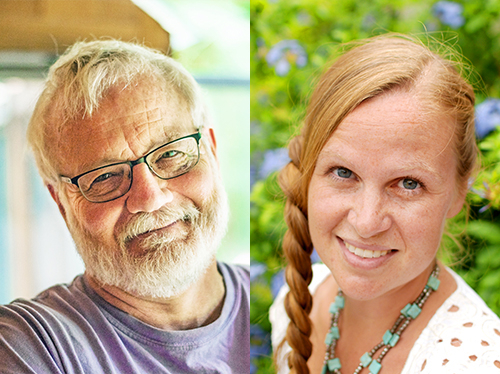

David Hayes is an OBGYN with an academic background and a passion for science and its proper application to clinical medicine. He has worked for Médecins Sans Frontières and trained in critical care obstetrics.
Dr. Hayes pursued training in vaginal breech birth during both medical school and his residency in Obstetrics and Gynecology, at a time when instruction in vaginal breech birth was no longer routinely included in the training of obstetricians in the United States. He has performed an estimated 140 vaginal breech births using traditional obstetric maneuvers in dorsal lithotomy positions. In 2016 he hosted a training session on physiologic vaginal breech birth taught by Dr. Shawn Walker, PhD. Since that time he has been fortunate to many vaginal breech births, including breech-breech twins and primiparous mothers, with a 100% successful vaginal breech birth rate and no significant complications or instrument interventions.
In 2018, Dr. Hayes arranged to host a workshop presented by breech researcher Dr. Rixa Freeze, PhD and was asked to teach the “hands-on” portion of the workshop. As of August 2019 and in conjunction with Dr. Freeze and her organization Breech Without Borders, he has committed full time to training and reestablishment of physiologic vaginal breech birth.
Dr. Rixa Freeze has a PhD in American Studies from the University of Iowa. Her doctoral studies focused on the history of healthcare and medicine with specialization in pregnancy, childbirth, and maternity care. Her dissertation examined why women in North America choose unassisted home births. She worked as a visiting assistant professor for 9 years at Wabash college. Her current research interests include human rights in childbirth, autonomy and informed consent, and vaginal breech birth.
She has published two articles about home birth: “Staying Home to Give Birth: Why Women in the United States Choose Home Birth” (JMWH 2009) and “Attitudes Towards Home Birth in the USA” (Expert Review of Obstetrics & Gynecology 2010). She recently published the article “Breech birth at home: Outcomes of 60 breech and 109 cephalic planned home and birth center births” with BMC Pregnancy & Childbirth. In 2019 she published an article about outcomes of breech at home, birth centers, and hospitals (Midwifery Today) and a book chapter “Freebirth in the United States” in the 2020 book Birthing Outside the System: The Canary in the Coal Mine.
Dr. Freeze is the founder and president of Breech Without Borders, a 501(c)3 nonprofit dedicated to breech training, education, and advocacy. She also blogs at Stand and Deliver (rixarixab.blogspot.com).
This presentation shows breech birth videos submitted to Breech Without Borders for analysis & educational purposes. In this session, the instructors present videos that show some type of deviation from normal physiological birth. Some of the births resolve spontaneously, while others require assistance in the form of maneuvers. As the videos play, the instructors discuss what they are seeing, point out what was done correctly and what might have been done differently, and give clinical tips to the audience members for when they are attending vaginal breech birth.
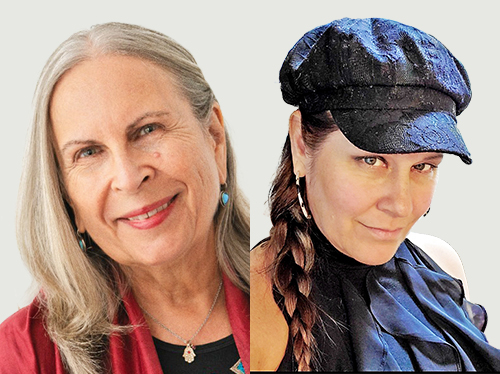

Barbara Harper is an internationally recognized expert on waterbirth and gentle birth, a published author of books and journal articles, who founded the non-profit organization, Waterbirth International, in 1988, with one goal in mind – to ensure that waterbirth is an “available option” for all women. During the past five decades Barbara has worked as an obstetric, pediatric, and critical care nurse, midwife, midwifery instructor, childbirth educator, and Blissborn Hypnosis teacher/trainer. She teaches unique seminars within hospitals, nursing schools, midwifery and medical schools and community groups worldwide. Her bestselling book, ‘Gentle Birth Choices,’ has been translated into 9 languages, including Chinese. Her latest collaborative book project was published in May 2021, called Bringing Birth Home. She is also working on a new book project called Gentle Birth Wisdom. She lives in Boca Raton, Florida teaching Blissborn Classes and attending occasional births.
Charlotte Sanchez is a childbirth educator and midwife. Supporting women and their families in the natural home birth process consecutively now for 30 years. As an Atlanta midwife, she believes in a woman’s right to determine her own choice of care during pregnancy and birth. Charlotte received her training through an extensive internship before becoming a Certified Professional Midwife (CPM), a program developed by the North American Registry of Midwives. She gained vast experience co-directed a free standing family birthing center in the state of Michigan. As well as founding Pregnancy Beat a national pregnancy website featuring expert articles, videos, birth stories and a community for mothers. It was after attending home births throughout the United States and Canada in places such as Windsor, Michigan, Ohio, Kentucky, California and Georgia that she now resides in Atlanta. Recently after completing 10 years serving as Vice President of the Georgia Midwife Association Charlotte decided to move forward to pursue her passion with teaching. She specializes in water birth, vbac, twins and breech birth. She has trained highly motivated students who have became practicing Midwives. Personally Charlotte is a mother of four children whom three were born gently into the hands of midwives, with the last a home water birth 25 years ago.
A steady decline in the rate of vaginal term breech birth over the past three decades has led to a resurgence of vaginal breech birth in many parts of the world. The dedication of researchers, teachers, providers, and non-profit organizations has fostered on- going studies, published research, and provided hands-on training. Within that dedicated group of professionals there is a controversy surrounding using water for second stage. There are strong opinions on either side. Dr. Herman Ponette, the head obstetrician at the H. Surreys Hospital in Ostend, Belgium, was the first obstetrician to detail his experience using water immersion for term breech vaginal birth in the early 1980s. Using water as a comfort measure for early labor is not currently in question. Most experienced breech providers have limited experience using water for the actual birth.
This session will examine the pros and cons of facilitating breech birth in water from a provider perspective. A brief discussion of fetal reflexes and newborn transitional physiology will be included as well as a summary of the current research. Using photos, video of breech waterbirths, and video demonstration on models of hand positions and techniques to assist with a breech birth will introduce the participant to this topic and create an interest for further research and investigation.

View Details / Enroll
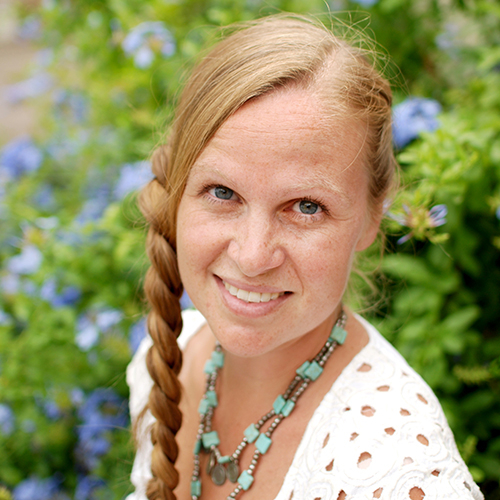

Dr. Rixa Freeze has a PhD in American Studies from the University of Iowa. Her doctoral studies focused on the history of healthcare and medicine with specialization in pregnancy, childbirth, and maternity care. Her dissertation examined why women in North America choose unassisted home births. She worked as a visiting assistant professor for 9 years at Wabash college. Her current research interests include human rights in childbirth, autonomy and informed consent, and vaginal breech birth.
She has published two articles about home birth: “Staying Home to Give Birth: Why Women in the United States Choose Home Birth” (JMWH 2009) and “Attitudes Towards Home Birth in the USA” (Expert Review of Obstetrics & Gynecology 2010). She recently published the article “Breech birth at home: Outcomes of 60 breech and 109 cephalic planned home and birth center births” with BMC Pregnancy & Childbirth. In 2019 she published an article about outcomes of breech at home, birth centers, and hospitals (Midwifery Today) and a book chapter “Freebirth in the United States” in the 2020 book Birthing Outside the System: The Canary in the Coal Mine.
Dr. Freeze is the founder and president of Breech Without Borders, a 501(c)3 nonprofit dedicated to breech training, education, and advocacy. She also blogs at Stand and Deliver (rixarixab.blogspot.com).
Topic: Physiological Breech Birth - [View Abstract]
This presentation demonstrates both upright and supine maneuvers for resolving obstructed breech birth using an obstetrical simulator. After reviewing the vaginal breech decision tree developed by Dr. David Hayes, we review the following maneuvers:
Upright maneuvers:
Front to Back (aka "Face to Pubes" or "Prayer Hands")
Side to Side (aka Louwen maneuver)
Upright Lovset
Shoulder press
Rock & Roll
Ritgen
Finger forceps (aka Finger Flexion or Crowning Touch)
Mauriceau-Banks/Cronk (upright MSV)
Chin tuck
Elevate-flex-rotate (for hyperextended head in the pelvic inlet)
Supine maneuvers:
Lovset
Burns-Marshall
Bracht
Pinard
MSV (Mauriceau-Smellie-Veit)

The Optibreech Trial Feasibility Study: The Role of Breech Specialist Midwives

Dr Shawn Walker is a midwife who specialises in care for women with a breech presenting baby at term. She is currently an NIHR Advanced Fellow, exploring the feasibility of a randomised trial (https://optibreech.uk/). Academically, she is based at King's College London, and clinically, she works with Chelsea and Westminster Hospitals NHS Foundation Trust. Her publications can be found at https://breechbirth.org.uk/publications/.
Topic: The Optibreech Trial Feasibility Study: The Role of Breech Specialist Midwives - [View Abstract]
Topic: Understanding the Mechanisms as the Key to Safe Breech Birth - [View Abstract]
Topic: Using Research to Improve the Way We Teach and Learn Vaginal Breech Birth - [View Abstract]
Topic: Using Research to Optimise Safety and Availability of Vaginal Breech Birth - [View Abstract]
This presentation will introduce you to the work being done to determine if it is feasible to deliver a randomized controlled trial of OptiBreech Care, which is a programme of care based on physiological breech birth research and practice. You will be introduced to the background for this work and the results to date. A significant portion of the presentation will focus on our qualitative work with women and midwives participating in the study, as part of our implementation process evaluation. Our combined quantitative and qualitative data indicate that breech birth active sites have implemented services through a dedicated clinic and/or a proficient intrapartum support service, organized and provided primarily by a Breech Specialist Midwife. While we identified challenges, this model has achieved >90% fidelity to the intervention’s goal of ensuring trained, proficient attendance at vaginal breech births, and it is highly acceptable to women.
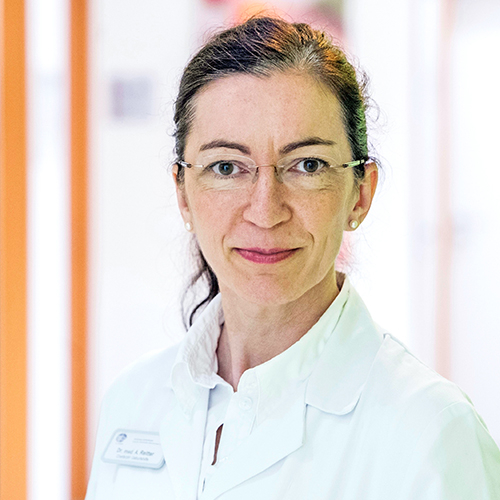

Dr Reitter is a fetal maternal medicine specialist working at present as the lead consultant at the Obstetrics and prenatal medicine department at Sachsenhausen Teaching Hospital in Frankfurt, Germany.
One of her main research interest focuses on upright birth. She is lead author in major work regarding upright breech delivery and provides opportunities for pregnant women. She is actively engaged in national and international teaching programs related to breech.
She finished her medical training in Germany, started her career in UK, has worked in India, the US and recently in Sydney/Australia.
After the results of the Term breech trial being published in 2000 more or less over night the rate of vaginal breech delivery has declined tremendously. But vaginal breech birth has become in some units and some countries again available, most of the time it is due to a group of midwives and obstetricians being interested in providing physiological birth in general. It has been felt, that if you choose the right candidate that vaginal breech birth is as safe as in cephalic birth. However upright birth position has been shown to have advantages due to gravity and natural movements being supported especially breech delivery. We have investigated the different mechanism and techniques to overcome possible delays.


Dr Shawn Walker is a midwife who specialises in care for women with a breech presenting baby at term. She is currently an NIHR Advanced Fellow, exploring the feasibility of a randomised trial (https://optibreech.uk/). Academically, she is based at King's College London, and clinically, she works with Chelsea and Westminster Hospitals NHS Foundation Trust. Her publications can be found at https://breechbirth.org.uk/publications/.
Topic: The Optibreech Trial Feasibility Study: The Role of Breech Specialist Midwives - [View Abstract]
Topic: Understanding the Mechanisms as the Key to Safe Breech Birth - [View Abstract]
Topic: Using Research to Improve the Way We Teach and Learn Vaginal Breech Birth - [View Abstract]
Topic: Using Research to Optimise Safety and Availability of Vaginal Breech Birth - [View Abstract]
This presentation considers physiological breech research published within the last two years, and its implications for how we teach and practice vaginal breech birth safety skills.



